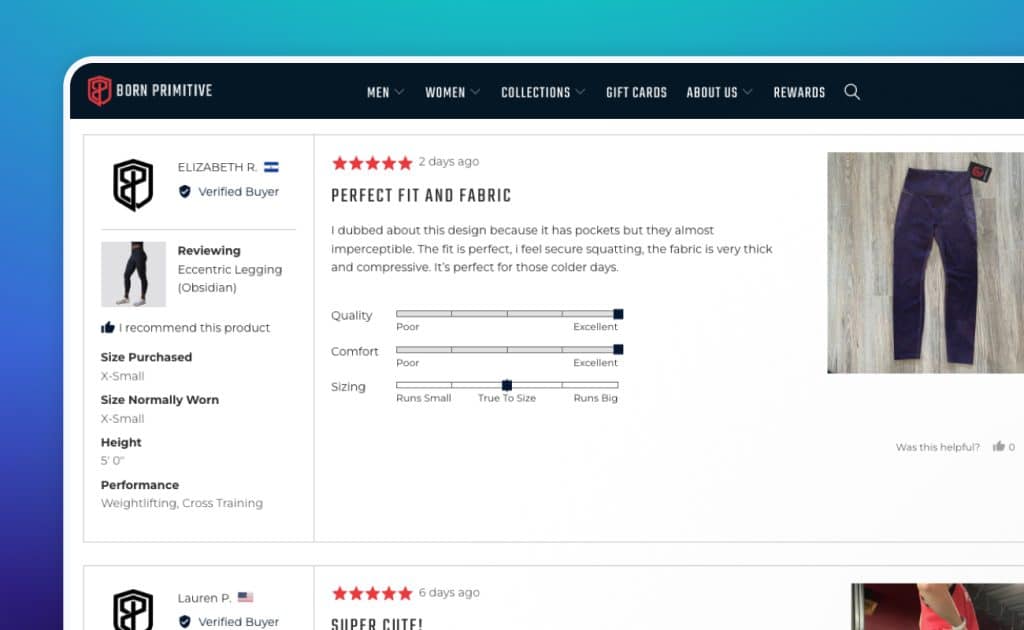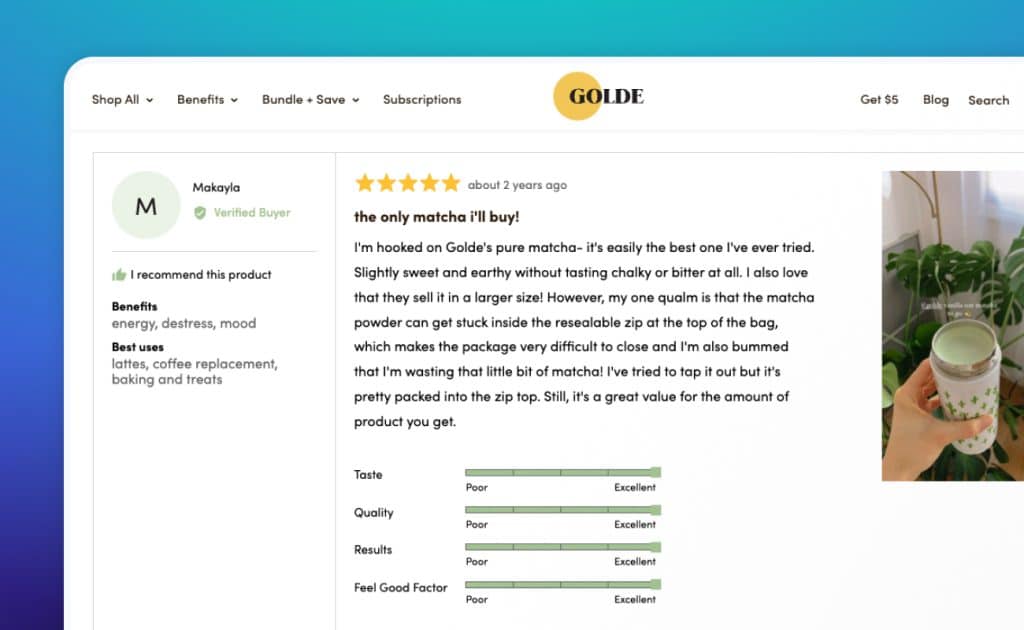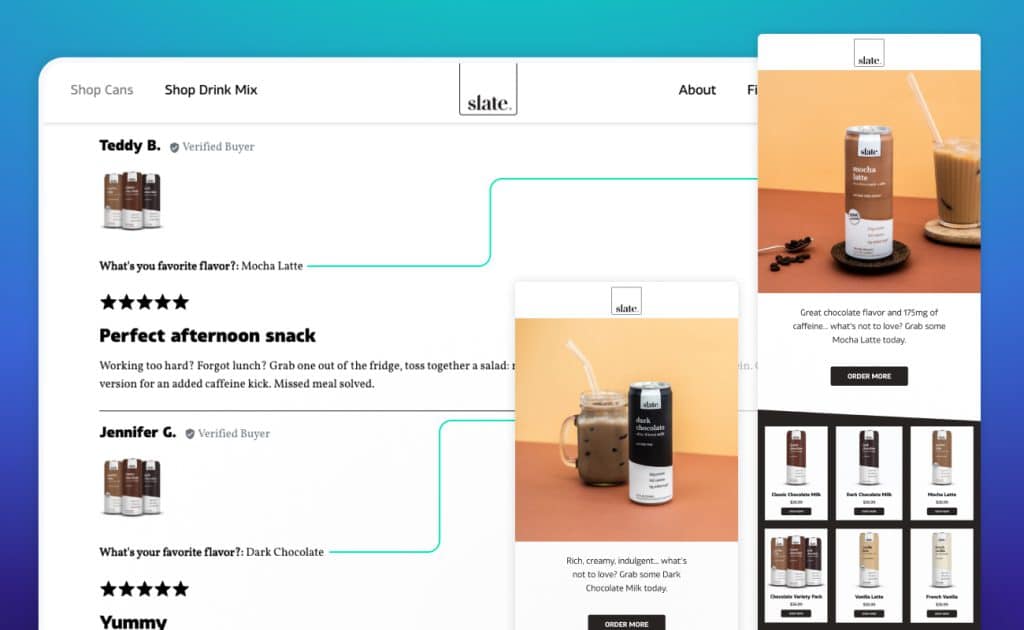
- Ecommerce Marketing
- Reviews and UGC
12 Ecommerce Growth Strategies to Maximize Sales in 2024
Megan Wenzl | Apr 23, 2024
Mar 28, 2023 | 6 minute read

Lindsay Kolinsky
Director of Marketing
Whether the goal is to increase conversions and average order values, or to optimize marketing spend and foster brand loyalty, having the ability to create personalized experiences can be a game changer for Shopify brands and other online retailers.
But while personalization can seem like a complicated or advanced marketing strategy, the fact is that many brands, including small to medium-sized businesses (SMBs), already have processes in place that can be easily optimized to collect zero-party data (ZPD) and engage with customers on a 1:1 level. More specifically, if your brand already utilizes customer reviews, the simple addition of collecting customer attributes as part of your reviews strategy can significantly enhance your personalization efforts.
In this blog, we’ll highlight everything brands need to know about customer attributes, including how to customize and display relevant attributes using Okendo review widgets, as well as how you can leverage your ZPD to enhance customer personalization.
In the most basic terms, customer attributes are data points that allow brands to learn more about an individual customer. This might be demographic information like age or gender, physical traits like height or skin tone, and even personal preferences or behavioral information such as how a customer intends to use a product.
This information can be incredibly valuable to brands and their marketing teams for a number of reasons. For one, the insights gained can significantly enhance a brand’s ability to send personalized offers and communications, and group customers into segments based on similar needs or interests.
Furthermore, when you display customer attributes with your reviews, it helps new shoppers access specific feedback from customers with similar interests and backgrounds, which helps build trust and allows for more informed purchasing decisions.
While asking for generalized information can be valuable, taking a customized approach is by far the most effective way to integrate customer attributes into your reviews.
For example, if you’re an activewear brand like Okendo customer Born Primitive, it can be really useful to include a buyer’s height, their usual clothing size, and the clothing size they purchased with their review. This will help shoppers with similar attributes make a more informed purchase decision, as they will feel much more confident knowing that someone with a similar body type or lifestyle had a positive experience with a product.
Born Primitive actually goes a step further and asks customers to provide information about the type of activities they perform while wearing the purchased item, i.e., cross training, running, weightlifting etc. Again, this level of customization can massively increase your shoppers’ trust in your brand and influence conversions.

Golde, the 100% natural and vegan-friendly superfood brand, also uses Okendo Reviews to learn more about their customers and boost personalization through customized attributes. They ask their customers for information regarding their age range, why they purchased a particular product (benefits), and how that product is meeting their individual lifestyle needs (best uses).

While these are established brands doing great things with customer attributes, we understand that if you’re just getting started, it can be overwhelming knowing which attributes you want to ask your customers for. Here are a few best practices to keep in mind when making your decision:
Limit your selection. There’s always the risk of a customer leaving out attributes or abandoning the review process altogether. To minimize this risk, we find it’s best to customize your reviews to include no more than five relevant attributes.
Consider your personalization needs. The ultimate purpose of utilizing customer attributes is to collect actionable zero-party data. Before deciding which attributes to include, consider how you intend to use the information to improve your personalization and segmentation strategies.
Prioritize relevancy. With consumers more concerned about data privacy than ever before, it’s critical to ensure that the attributes you ask for are objectively relevant to your brand or the specific product being reviewed. By prioritizing relevancy and displaying attributes clearly in reviews across your website, you’re letting the customer know exactly how and why their data is being collected.
Finally, while integrating customer attribute data into reviews will help maximize the collection of zero-party data, you will still need a strategy to maximize the impact of that data on your personalization and segmentation processes.
Fortunately, Okendo makes it easy for Shopify brands to improve their personalization efforts. In addition to providing an intuitive customization process when adding customer attributes to reviews, the data obtained from reviews integrates seamlessly with ESP or SMS platforms like Klaviyo and Attentive, enabling you to send personalized, 1:1 messaging based on the unique needs of each customer.
For example, subscription-based DTC brand, Slate Milk, was receiving a lot of positive feedback from customers who purchased their variety pack of high-protein beverages. However, they had no way of knowing which flavors drove the satisfaction of individual customers, and therefore were unable to follow-up with highly personalized offers based on each reviewer’s preferences. By utilizing a customer attribute in the variety pack review process to ask customers which flavor was their favorite, Slate Milk was able to successfully target these segments with personalized promotions and upselling campaigns based on each customer’s flavor of choice.

But personalization doesn’t always need to be limited to email and SMS communications, and in fact can be achieved more passively, and even apply to customers who have yet to purchase a product or leave a review. By simply adding customer attributes and filters to the Okendo reviews displayed on your website or product pages, new customers are able to search for reviews from similar customers, or for attributes that are most relevant to their individual needs.
Overall, while creating personalized experiences across touchpoints in the buying process might seem like a large undertaking, the truth is that many brands already have the resources needed to obtain this ability. Whether you’re a well established online retailer or a small to medium sized business, the simple task of adding customer attributes to your review process could be the perfect place to start or accelerate your personalization journey.
And in these undeniably trying times where SMBs and other organizations are navigating economic uncertainty, any action that helps you delight and retain customers is important.
As Bridget Stapleton, CRM Specialist at DataSauce, says, “Customer retention is the most important commodity in a recession, and our tried and tested method for building loyalty and increasing customer lifetime value comes down to data and personalization. Understanding a customer’s interests and behavior through data enrichment tools like quizzes, surveys and even onsite pop ups helps us speak directly to them on what they care about most, and sets our clients apart from their competitors.”
Related articles
Ready to learn more?